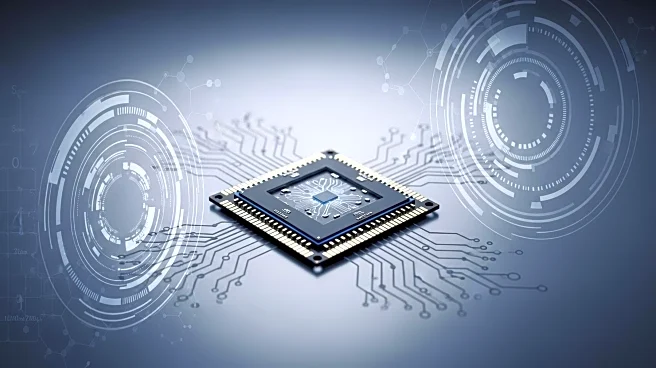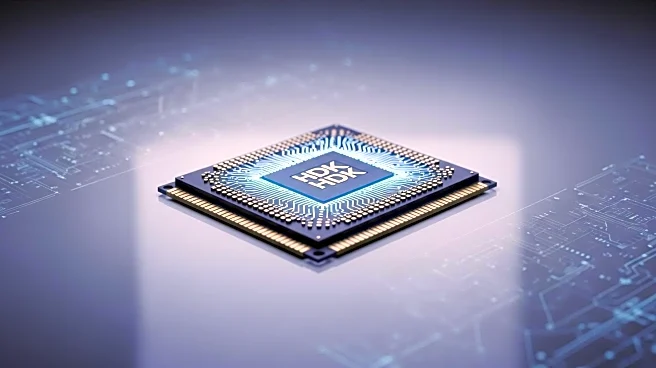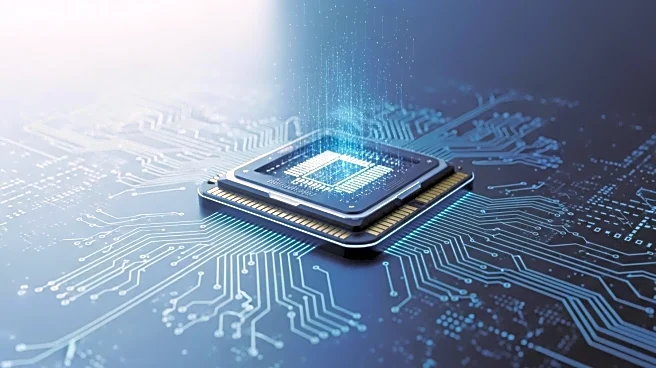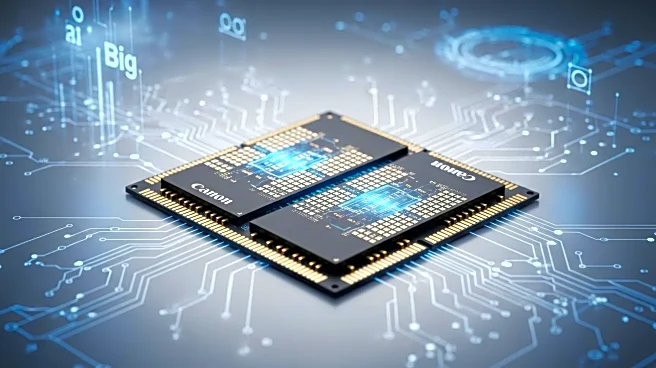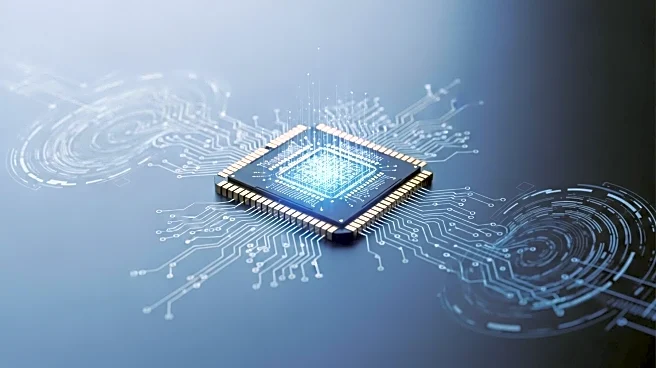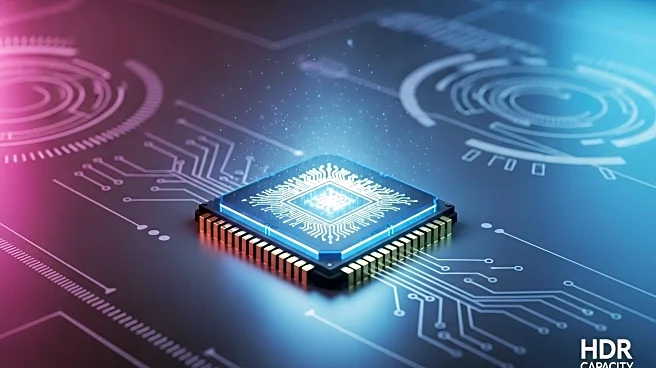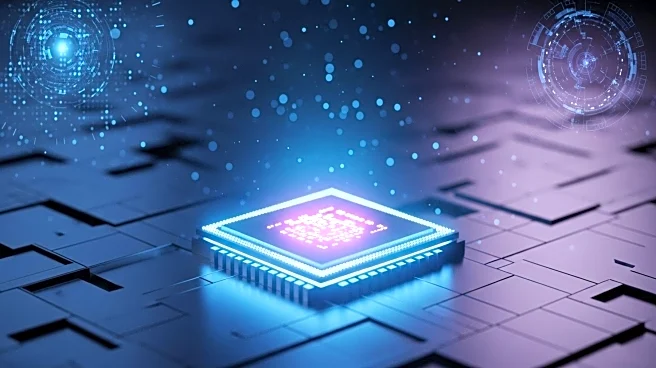What's Happening?
A research team from Fudan University has developed the world's first two-dimensional-silicon-based hybrid architecture chip, with their findings published in the journal Nature. This chip integrates two-dimensional ultrafast flash memory with the mature CMOS process, addressing key challenges in engineering two-dimensional information devices and enhancing storage speed. The chip has completed tape-out and supports high-speed operations with a yield rate of 94.34%. The research, led by Liu Chunsen and Zhou Peng, marks a significant milestone in two-dimensional electronic device engineering.
Why It's Important?
This development represents a breakthrough in semiconductor technology, potentially revolutionizing the memory industry by offering faster and more energy-efficient storage solutions. The integration of two-dimensional materials with CMOS technology could lead to disruptive applications in fields like artificial intelligence and big data, providing faster data support. The success of this chip could accelerate the adoption of two-dimensional electronics in practical applications, enhancing computing power and efficiency.
What's Next?
The research team plans to establish an experimental base and collaborate with institutions to scale the project to a megascale level within 3-5 years. They aim to license intellectual property generated during this period to cooperative enterprises. The team hopes to replace traditional memory systems with general-purpose memory, making two-dimensional flash memory the standard storage solution in the AI era.
Beyond the Headlines
The integration of two-dimensional materials with CMOS technology could lead to long-term shifts in the semiconductor industry, potentially setting new standards for memory devices. This innovation may drive fundamental changes in device mechanisms and system-level advantages, influencing future technological advancements.
